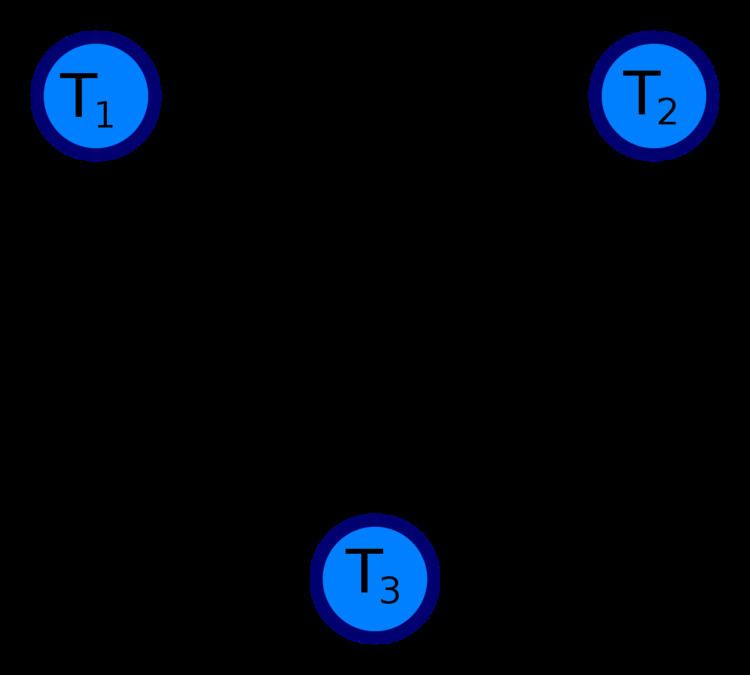 | ||
A precedence graph, also named conflict graph and serializability graph, is used in the context of concurrency control in databases.
Contents
The precedence graph for a schedule S contains:
Precedence graph example
Example 1:
or
Example 2:
A precedence graph of the schedule D, with 3 transactions. As there is a cycle (of length 2; with two edges) through the committed transactions T1 and T2, this schedule (history) is not Conflict serializable.
Testing Serializability with Precedence Graph
The drawing sequence for the precedence graph:-
- For each transaction Ti participating in schedule S, create a node labelled Ti in the precedence graph. So the precedence graph contains T1, T2, T3
- For each case in S where Ti executes a write_item(X) then Tj executes a read_item(X), create an edge (Ti --> Tj) in the precedence graph. This occurs nowhere in the above example, as there is no read after write.
- For each case in S where Ti executes a read_item(X) then Tj executes a write_item(X), create an edge (Ti --> Tj) in the precedence graph. This results in a directed edge from T1 to T2.
- For each case in S where Ti executes a write_item(X) then Tj executes a write_item(X), create an edge (Ti --> Tj) in the precedence graph. This results in directed edges from T2 to T1, T1 to T3, and T2 to T3.
- The schedule S is conflict serializable if the precedence graph has no cycles. As T1 and T2 constitute a cycle, then we cannot declare S as serializable or not and serializability has to be checked using other methods.
References
Precedence graph Wikipedia(Text) CC BY-SA
